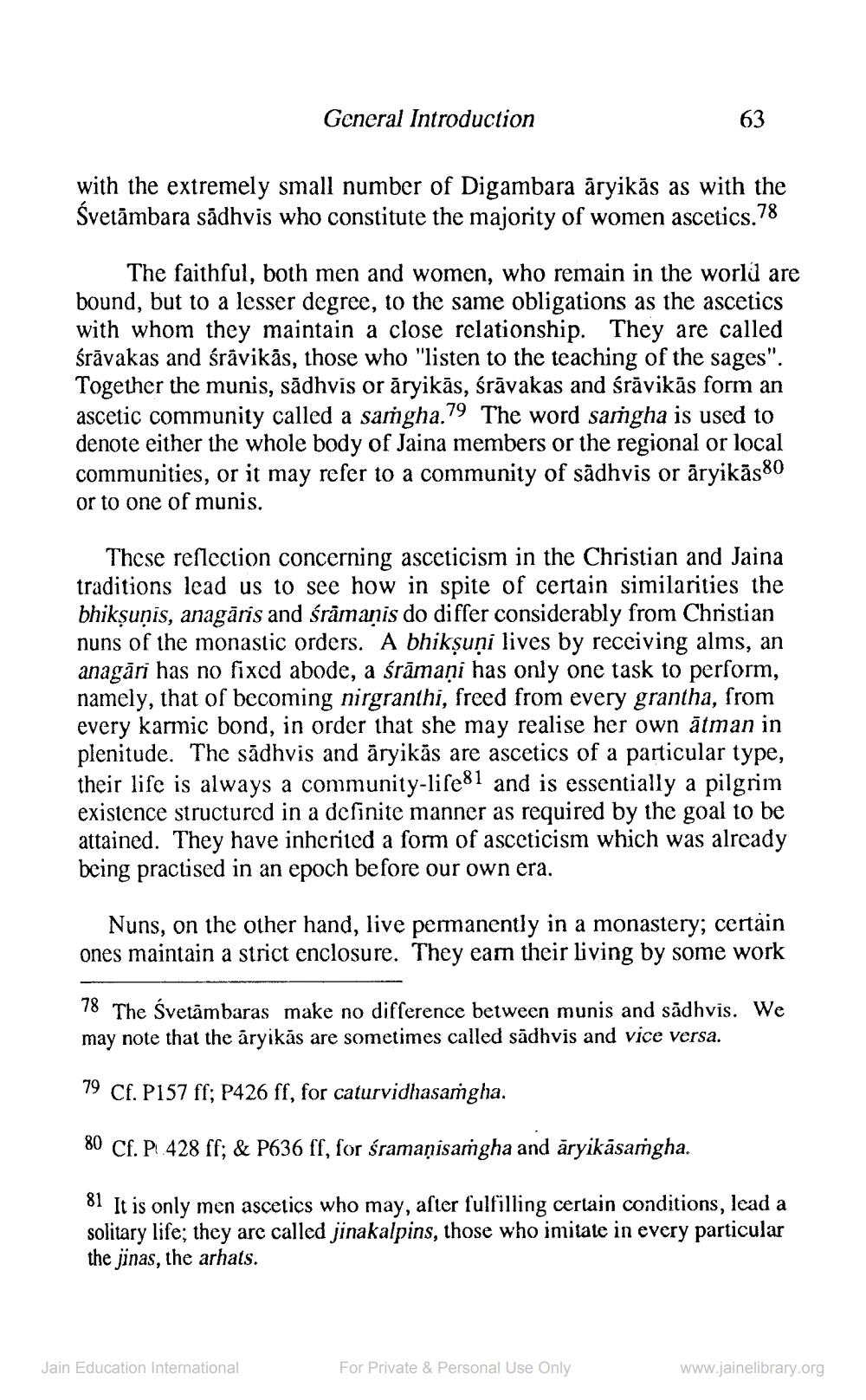________________
General Introduction
with the extremely small number of Digambara äryikās as with the Svetāmbara sādhvis who constitute the majority of women ascetics.78
The faithful, both men and women, who remain in the worlü are bound, but to a lesser degree, to the same obligations as the ascetics with whom they maintain a close relationship. They are called śrāvakas and śrāvikās, those who "listen to the teaching of the sages". Together the munis, sādhvis or āryikās, śrāvakas and śrāvikās form an ascetic community called a samgha.79 The word samgha is used to denote either the whole body of Jaina members or the regional or local communities, or it may refer to a community of sädhvis or äryikās80 or to one of munis.
These reflection concerning asceticism in the Christian and Jaina traditions lead us to see how in spite of certain similarities the bhikṣuṇis, anagāris and śrāmaņis do differ considerably from Christian nuns of the monastic orders. A bhikṣuņi lives by receiving alms, an anagari has no fixed abode, a śrāmaņi has only one task to perform, namely, that of becoming nirgranthi, freed from every grantha, from every karmic bond, in order that she may realise her own ātman in plenitude. The sādhvis and āryikās are ascetics of a particular type, their life is always a community-life81 and is essentially a pilgrim existence structured in a definite manner as required by the goal to be attained. They have inhcriied a form of asceticism which was already being practised in an epoch before our own era.
Nuns, on the other hand, live permanently in a monastery; certain ones maintain a strict enclosure. They earn their living by some work
78 The Svetāmbaras make no difference between munis and sādhvis. We may note that the aryikās are sometimes called sādhvis and vice versa.
79 Cf. P157 ff; P426 ff, for caturvidhasamgha.
80 Cf. P.428 ff; & P636 ff, for śramaņisamgha and äryikāsamgha.
81 It is only men ascetics who may, after fulfilling certain conditions, lead a solitary life; they are called jinakalpins, those who imitate in every particular the jinas, the arhats.
Jain Education International
For Private & Personal Use Only
www.jainelibrary.org




